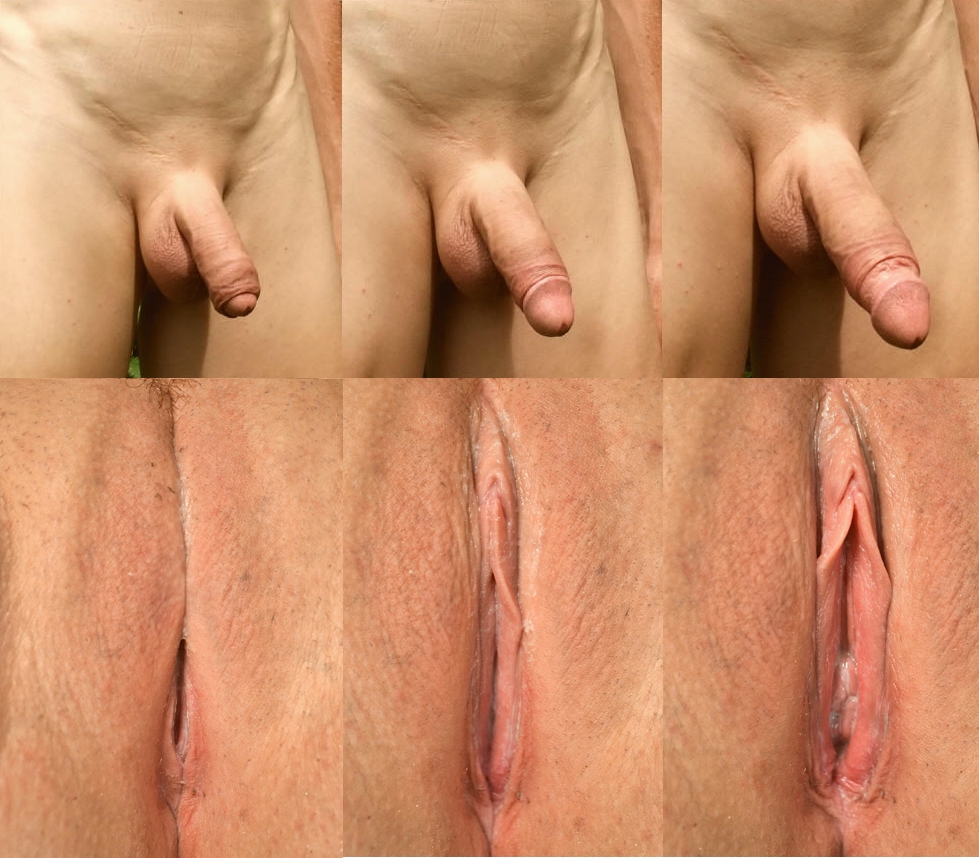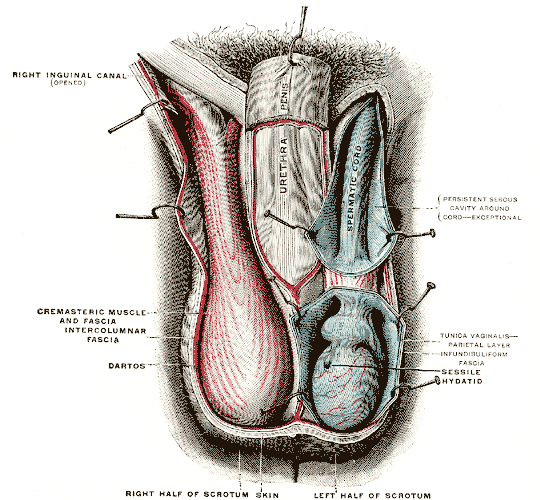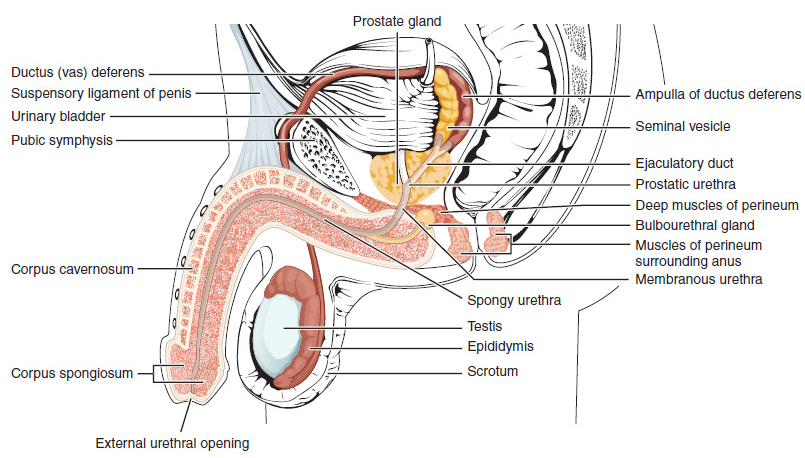|
Sexual Response Cycle
The human sexual response cycle is a four-stage model of physiological responses to sexual stimulation, which, in order of their occurrence, are the excitement, plateau, orgasmic, and resolution phases. This physiological response model was first formulated by William H. Masters and Virginia E. Johnson, in their 1966 book ''Human Sexual Response''. Since that time, other models regarding human sexual response have been formulated by several scholars who have criticized certain inaccuracies in the human sexual response cycle model. Excitement phase The excitement phase (also known as the arousal phase or initial excitement phase) is the first stage of the human sexual response cycle, which occurs as a result of physical or mental erotic stimuli, such as kissing, making out, fantasizing or viewing erotic images, that leads to sexual arousal. During this stage, the body prepares for sexual intercourse, initially leading to the plateau phase. There is wide socio-cultural variatio ... [...More Info...] [...Related Items...] OR: [Wikipedia] [Google] [Baidu] |
Physiological Response
Signs and symptoms are diagnostic indications of an illness, injury, or condition. Signs are objective and externally observable; symptoms are a person's reported subjective experiences. A sign for example may be a higher or lower temperature than normal, raised or lowered blood pressure or an abnormality showing on a medical scan. A symptom is something out of the ordinary that is experienced by an individual such as feeling feverish, a headache or other pains in the body, which occur as the body's immune system fights off an infection. Signs and symptoms Signs A medical sign is an objective observable indication of a disease, injury, or medical condition that may be detected during a physical examination. These signs may be visible, such as a rash or bruise, or otherwise detectable such as by using a stethoscope or taking blood pressure. Medical signs, along with symptoms, help in forming a diagnosis. Some examples of signs are nail clubbing of either the fingernails or toe ... [...More Info...] [...Related Items...] OR: [Wikipedia] [Google] [Baidu] |
Vasocongestion
Vasocongestion, vascular congestion or vascular engorgement is the swelling of bodily tissues caused by increased vascular blood flow and a localized increase in blood pressure. Typical causes of vasocongestion in humans includes menstruation, sexual arousal, REM sleep, strong emotions, illnesses, deep venous thrombosis (DVT) and allergic reactions. Illnesses Menstrual cramps are one of the most common side effects of vasocongestion in adult females. Although pain and discomfort varies among individuals, vasocongestion is an essential part of the shedding of the lining of the uterus. Abnormal vasocongestion during the menstrual cycle can lead to irregular bleeding, severe and debilitating cramps and anemia caused by increased menstrual flow. The temporary vasocongestion of the cheeks of the face is called blushing. It may be caused by the emotions of anger or embarrassment. The illness of rosacea is a chronic vasocongestion condition of the face that primarily affects the cheeks a ... [...More Info...] [...Related Items...] OR: [Wikipedia] [Google] [Baidu] |
Scrotum
In most terrestrial mammals, the scrotum (: scrotums or scrota; possibly from Latin ''scortum'', meaning "hide" or "skin") or scrotal sac is a part of the external male genitalia located at the base of the penis. It consists of a sac of skin containing the external spermatic fascia, testicles, epididymides, and vasa deferentia. The scrotum will usually tighten when exposed to cold temperatures. The scrotum is homologous to the labia majora in females. Structure In regards to humans, the scrotum is a suspended two-chambered sac of skin and muscular tissue containing the testicles and the lower part of the spermatic cords. It is located behind the penis and above the perineum. The perineal raphe is a small, vertical ridge of skin that expands from the anus and runs through the middle of the scrotum front to back. The scrotum is also a distention of the perineum and carries some abdominal tissues into its cavity including the testicular artery, testicular vein, and ... [...More Info...] [...Related Items...] OR: [Wikipedia] [Google] [Baidu] |
Circumcision
Circumcision is a procedure that removes the foreskin from the human penis. In the most common form of the operation, the foreskin is extended with forceps, then a circumcision device may be placed, after which the foreskin is excised. Topical or locally injected anesthesia is generally used to reduce pain and physiologic stress. Circumcision is generally electively performed, most commonly done as a form of preventive healthcare, as a religious obligation, or as a cultural practice. It is also an option for cases of phimosis, other pathologies that do not resolve with other treatments, and chronic urinary tract infections (UTIs). The procedure is contraindicated in cases of certain genital structure abnormalities or poor general health. The procedure is associated with reduced rates of sexually transmitted infections and urinary tract infections. This includes reducing the incidence of cancer-causing forms of human papillomavirus (HPV) and reducing HIV transmi ... [...More Info...] [...Related Items...] OR: [Wikipedia] [Google] [Baidu] |
Perineum
The perineum (: perineums or perinea) in placentalia, placental mammals is the space between the anus and the genitals. The human perineum is between the anus and scrotum in the male or between the anus and vulva in the female. The perineum is the region of the body between the pubic symphysis (pubic arch) and the coccyx (tail bone), including the perineal body and surrounding structures. The perineal raphe is visible and pronounced to varying degrees. Etymology The word entered English from late Latin via Greek language, Greek περίναιος ~ περίνεος ''perinaios, perineos'', itself from περίνεος, περίνεοι 'male genitals' and earlier περίς ''perís'' 'penis' through influence from πηρίς ''pērís'' 'scrotum'. The term was originally understood as a purely male body-part with the perineal raphe seen as a continuation of the scrotal septum since Virilization, masculinization causes the development of a large anogenital distance in men, i ... [...More Info...] [...Related Items...] OR: [Wikipedia] [Google] [Baidu] |
Testicle
A testicle or testis ( testes) is the gonad in all male bilaterians, including humans, and is Homology (biology), homologous to the ovary in females. Its primary functions are the production of sperm and the secretion of Androgen, androgens, primarily testosterone. The release of testosterone is regulated by luteinizing hormone (LH) from the anterior pituitary gland. Sperm production is controlled by follicle-stimulating hormone (FSH) from the anterior pituitary gland and by testosterone produced within the gonads. Structure Appearance Males have two testicles of similar size contained within the scrotum, which is an extension of the abdominal wall. Scrotal asymmetry, in which one testicle extends farther down into the scrotum than the other, is common. This is because of the differences in the vasculature's anatomy. For 85% of men, the right testis hangs lower than the left one. Measurement and volume The volume of the testicle can be estimated by palpating it and compari ... [...More Info...] [...Related Items...] OR: [Wikipedia] [Google] [Baidu] |
Erection
An erection (clinically: penile erection or penile tumescence) is a Physiology, physiological phenomenon in which the penis becomes firm, engorged, and enlarged. Penile erection is the result of a complex interaction of psychological, neural, vascular, and endocrine factors, and is often associated with sexual arousal, sexual attraction or libido, although erections can also be spontaneous. The shape, angle, and direction of an erection vary considerably between humans. Physiologically, an erection is required for a male to effect penetration or sexual intercourse and is triggered by the parasympathetic division of the autonomic nervous system, causing the levels of nitric oxide (a vasodilation, vasodilator) to rise in the Trabeculae of corpora cavernosa of penis, trabecular artery, arteries and smooth muscle of the penis. The arteries Vasodilation, dilate causing the Corpus cavernosum penis, corpora cavernosa of the penis (and to a lesser extent the corpus spongiosum) to fill ... [...More Info...] [...Related Items...] OR: [Wikipedia] [Google] [Baidu] |
Human Penis
In Human body, human anatomy, the penis (; : penises or penes; from the Latin ''pēnis'', initially 'tail') is an external sex organ (intromittent organ) through which males urination, urinate and ejaculation, ejaculate, as Penis, on other animals. Together with the testes and surrounding structures, the penis functions as part of the male reproductive system. The main parts of the penis are the Root of penis, root, Body of penis, body, the epithelium of the penis, including the shaft skin, and the foreskin covering the glans penis, glans. The body of the penis is made up of three columns of tissue (biology), tissue: two Corpus cavernosum penis, corpora cavernosa on the dorsal side and corpus spongiosum penis, corpus spongiosum between them on the ventral side. The Urethra#Male, urethra passes through the prostate gland, where it is joined by the ejaculatory ducts, and then through the penis. The urethra goes across the corpus spongiosum and ends at the tip of the glans as the o ... [...More Info...] [...Related Items...] OR: [Wikipedia] [Google] [Baidu] |
Orgasm
Orgasm (from Greek , ; "excitement, swelling"), sexual climax, or simply climax, is the sudden release of accumulated sexual excitement during the sexual response cycle, characterized by intense sexual pleasure resulting in rhythmic, involuntary muscular contractions in the pelvic region.Se133–135 for orgasm information, anpage 76 for G-spot and vaginal nerve ending information. Orgasms are controlled by the involuntary or autonomic nervous system and are experienced by both males and females; the body's response includes muscular spasms (in multiple areas), a general euphoric sensation, and, frequently, body movements and vocalizations. The period after orgasm (known as the resolution phase) is typically a relaxing experience after the release of the neurohormones oxytocin and prolactin, as well as endorphins (or "endogenous morphine"). Human orgasms usually result from physical sexual stimulation of the penis in males (typically accompanied by ejaculation) and of ... [...More Info...] [...Related Items...] OR: [Wikipedia] [Google] [Baidu] |
Anal Contraction
The anal wink, anal reflex, perineal reflex, or anocutaneous reflex is the reflexive contraction of the external anal sphincter upon stroking of the skin around the anus. A noxious or tactile stimulus will cause a wink contraction of the anal sphincter muscles and also flexion. The stimulus is detected by the nociceptors in the perineal skin to the pudendal nerve, where a response is integrated by the spinal cord sacral segments S2-S4. The absence of this reflex indicates that there is an interruption of the reflex arc, or damage to the spinal cord, which may be in the sensory afferent limb or the motor efferent limb. The synapse between the afferent and efferent limbs occurs in the lowest sacral segments of the spinal cord The spinal cord is a long, thin, tubular structure made up of nervous tissue that extends from the medulla oblongata in the lower brainstem to the lumbar region of the vertebral column (backbone) of vertebrate animals. The center of the spinal c .... See ... [...More Info...] [...Related Items...] OR: [Wikipedia] [Google] [Baidu] |
External Anal Sphincter
The external anal sphincter (or sphincter ani externus) is an oval tube of skeletal muscle fibers. Distally, it is adherent to the skin surrounding the margin of the anus. It exhibits a resting state of tonical contraction and also contracts during the bulbospongiosus reflex. Anatomy The external anal sphincter is far more substantial than the internal anal sphincter. The proximal portion of external anal sphincter overlaps the internal anal sphincter (which terminates distally a little distance proximal to the anal orifice) superficially; where the two overlap, they are separated by the intervening conjoint longitudinal muscle. Structure Historically, the sphincter was described as consisting of three parts (deep, superficial, and subcutaneous). This is not supported by current anatomical knowledge. Some sources still describe it in two layers, deep (or proximal) and superficial (or distal or subcutaneous). Some of the muscles fibres decussate at the anterior midline and po ... [...More Info...] [...Related Items...] OR: [Wikipedia] [Google] [Baidu] |





